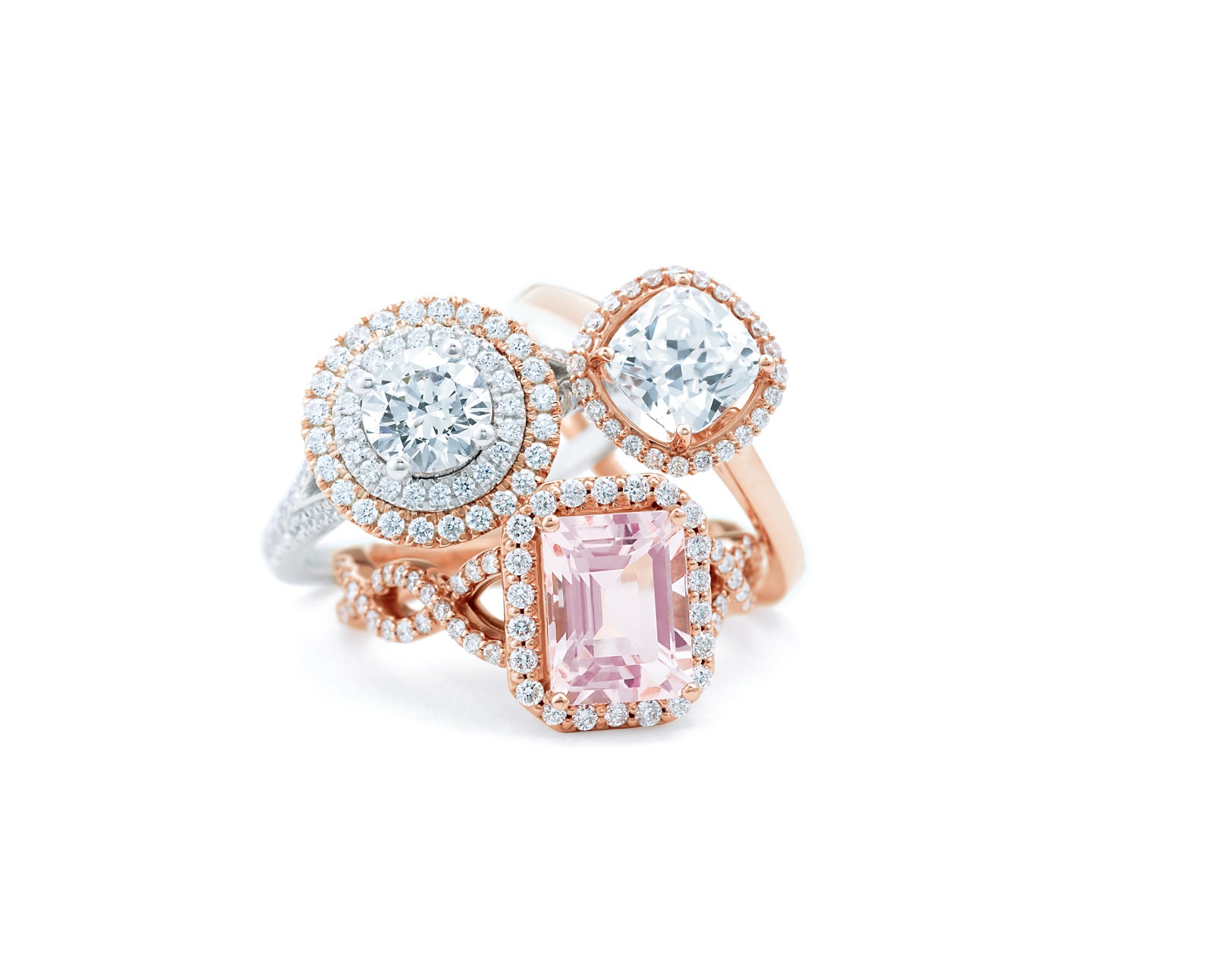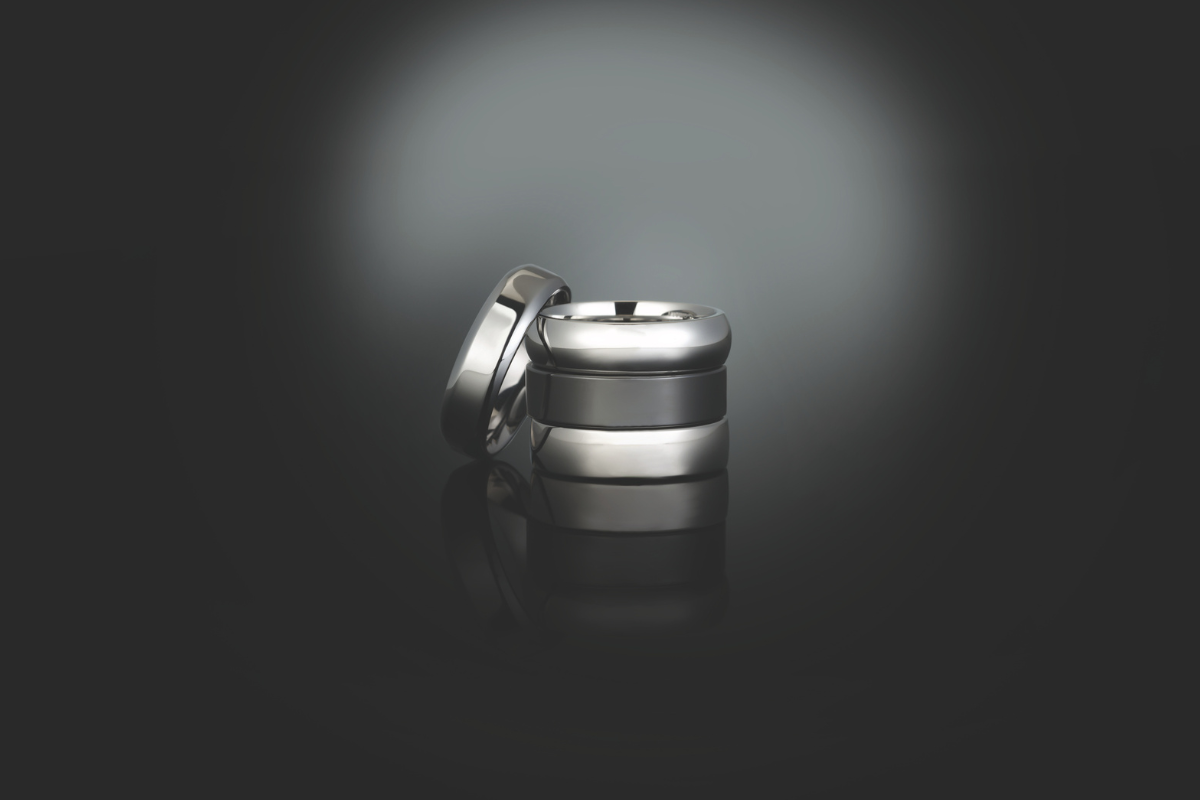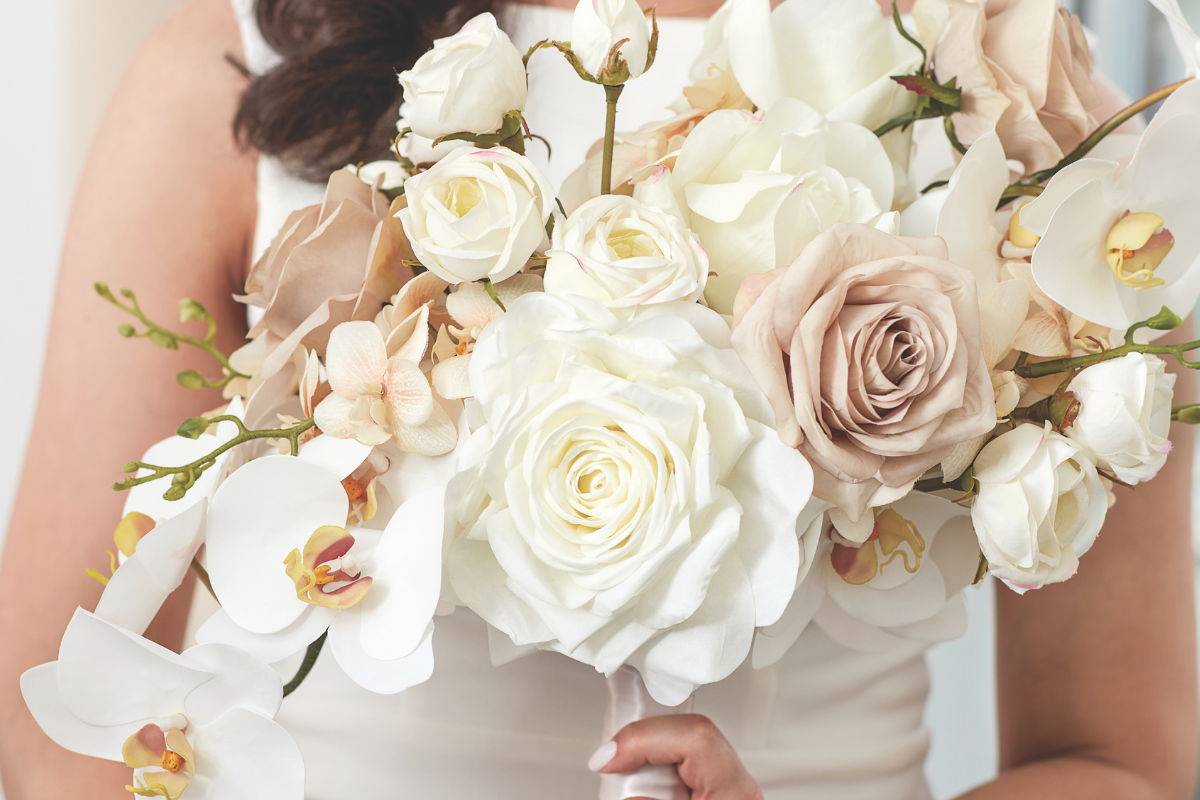With engagement season almost upon us, now is the time many couples start to research their options for engagement rings. If you've already started and the proposal is happening in the near future, then you are ahead of the game! It's always best to be fully prepared before making such a big purchase. There is so much to consider; like budget, style, and type of stone to name a few. That's why we've compiled a glossary of sorts, a list from A-Z on important terminology to know in your search for the perfect engagement ring.

A:
Anatomy: A diamond's anatomy is made up of weight ratio, girdle thickness, symmetry of its facets, and the quality of the polish of those facets.Accented: Accented rings are those that have smaller side stones (diamonds or gemstones) or use them to add extra brilliance to a ring, like in a halo. We refer to accented as our rings that either have side stones or have a unique character about them, like a twisted rope-style band, or a "peekaboo" feature.
B:
Bezel-Set: Bezel-set is a setting where the metal of the ring is elevated to form a collar around the entire diamond, up to the top edge of the diamond. This type of setting is the most secure for the diamond.
Brilliance: Brilliance, or brightness, refers to the white light that is reflected back to the eye from the diamond. Precise artistry and workmanship are required to fashion a stone so its proportions, symmetry, and polish deliver the return of light only possible in a diamond.
Blemishes: Blemishes are external characteristics on a diamond that are used in part to determine a diamond's clarity grade. Blemishes and inclusions (inside of a diamond) are more common in mined diamonds than they are in lab-grown diamonds, because the latter is grown in a controlled environment.
C:
Cut: A diamond's cut grade is based upon how well the facets interact with light. Cut is extremely important in the diamond's beauty and value. Precision is required to fashion a stone so the proportions, symmetry, and polish result in a beautiful return in light.
Clarity: Determining a diamond's clarity involves determining the size, number, nature, and position of blemishes and inclusions. The best clarity grade starts at F (Flawless both inside and outside), then IF (Internally Flawless) VVS1 and VVS2 (Very Very Slightly Included), VS1 and VS2 (Very Slightly Included), SI1 and SI2 (Slightly Included) and goes all the way down to I1, I2 and I3 (Included). The most common clarity grades you'll see that are ready to sell are between VVS-SI. It's important to keep in mind that to the naked eye, a VS1 stone and an SI2 might look the same, but they are very different in overall quality.
Carat: A diamond's carat weight is the measurement of how much a diamond weighs. Each carat can be subdivided into 100 points. For example, a diamond that weighs "25 points" is a 0.25 carat diamond, and a diamond that is "100 points" is a 1.0 carat diamond. Diamond prices do increase as the weight does, but the overall value of the diamond is still determined using all of the 4 C's.
Color: A diamond's color evaluation is actually based on the absence of color. The GIA color grading scale starts at D, and goes to Z. Check out their interactive diamond color scale here!
Cushion: The cushion-cut has been around for almost 200 years, and used to be the most popular diamond cut. There is the antique cushion, and the more modern modified cushion, which allows for better brilliance and fire. Cushion cut is a wonderful choice for a halo-style ring.
Conflict-Free: The term "conflict-free" is being used all over retail stores, in-person and online. In fact, you'd be hard pressed NOT to see that term when you peruse different online jewelry stores. They'll tell you that their mined diamonds use the Kimberley Process Certification Scheme, and therefore, their diamonds are conflict-free. While set up to prevent conflict diamonds (rebel groups using diamond profits to fund wars) from infiltrating the diamond supply, it has major loopholes. One loophole being the fact that their only definition of conflict is "rough diamonds used by rebel movements or their allies to finance armed conflicts." This means that a Kimberley Process certified diamond may be tied to the violent circumstances of a government army (they only refer to "rebel movements"), child labor, or extreme underpayment/exploitation of adult workers. And of course, these diamonds are still tied to the degradation of the environment, as well. On the other hand, a lab-grown diamond is the only conflict-free option, as it is free of human rights and environmental abuse.
CVD: Chemical Vapor Deposition (CVD) refers to a growth process used to produce a lab-grown diamond. A microwave beam cuts through a carbon-rich plasma cloud, which then rains down carbon atoms one by one onto the seed crystal wafer.
D:
Diamond Certificate: A diamond certificate can also be referred to as a grading report. Be wary of retailers who sell diamonds with their own grading reports. You should always aim to get a diamond that has been graded and certified by a non-biased, 3rd party institution like the GIA (Gemological Institute of America) or IGI (International Gemological Institute). The GIA does grade lab-grown diamonds, but their report is more vague than a mined diamond report. All of our diamonds come with an IGI report/certificate that gives an assessment of the diamond's clarity, cut, color, and carat weight, as well as its laser inscription number, and more.
E:
Excellent Cut: Excellent cut is the highest grade on the diamond cut grading scale. The following grades are Very Good, Good, Fair, and Poor. An excellent cut would have an even pattern of light and dark areas.
Emerald Cut: The Emerald cut diamond is a "fancy" shape and is a great choice for solitaires. The elongated shape makes the finger look more slender. They are less expensive than a round diamond, so if you're looking for a way to save a little money without sacrificing the size, the emerald cut is worth looking into. Keep in mind that because there is more surface area, inclusions can be seen easier. We suggest looking at an emerald cut with a clarity grade of VS2 or better.
Engraving: Engraving refers to a message lasered on the band of a piece of jewelry, typically a ring. If you have a special message, like a date or phrase with a special meaning, consider getting it engraved!
F:
Fire: Fire, relating to a diamond's cut, is the scattering of white light into all the colors of the rainbow.
Facets: A facet is a small plane surface on something with many sides; in this case, a diamond.
Fancy Shapes: Fancy shapes include all shapes that are not round. Some popular fancy shapes are emerald, pear, princess, oval, marquise, and cushion.
G:
Girdle: The girdle of a diamond is a narrow section separating the crown from the pavilion. When looking at a diamond that's been set in a ring, the girdle is the widest part of the diamond, and makes contact with the setting.
Gemstone: The standard definition of a gemstone is a piece of mineral crystal, which can be cut and fashioned into a gem-quality piece of jewelry. There are some gemstones that are not minerals however, like pearl and amber. All of our gemstones are lab-grown, meaning they are the same, chemically and physically, as a mined gemstone, just grown above ground compared to below. Our gemstones include Alexandrite, Blue, Champagne, Padparadscha and Pink Sapphires, Emeralds, and Rubies. Gemstones used for engagement rings are becoming increasingly popular and make for a really beautiful and unique ring.
H:
Halo: The halo ring is a setting in which the center stone is encircled by smaller diamonds or gemstones. This could include a single halo or double halo (one or two rows of small diamonds). All of our smaller diamonds used in our settings are lab-grown and of VVS quality, so they shine extra bright. If having a lab-grown engagement ring is important to you, make sure to ask the retailer if the side stones are also lab-grown. Many times, they are not, and are actually mined diamonds.
Hardness: Britannica states, "The Mohs Scale of Hardness is the rough measure of the resistance of a smooth surface to scratching or abrasion, expressed in terms of ascale devised (1812) by the German mineralogist FriedrichMohs." In simple terms, if a certain mineral scratches another mineral, that first mineral is harder than the latter. The scale is from 1-10, with 10 being the hardest. But as the GIA states, the scale "is deceptive." The scale goes by steps; for example, a sapphire (corundum) is a "9", and a diamond is a "10." However, a diamond is actually 4 times harder than corundum. Also, just because a diamond is a "10" on the hardness scale, does not mean it is indestructible! It just means that it has the highest ability to resist scratching.
HPHT: High Pressure High Temperature (HPHT) is a method of producing lab-grown diamonds. Without getting overly technical, as the name suggests, extreme pressures and temperatures are used, where carbon atoms are are released and crystal growth starts, layer by layer and atom by atom, over a short period of time. The temperature and pressure have to remain constant the entire growth period in order to produce gem quality diamonds.

I:
Inclusions: Inclusions are the internal characteristics of a diamond when considering diamond clarity. Along with blemishes, these characteristics are used to determine the clarity grade of a diamond by the number, size, relief, nature, and position of them.
IGI: The International Gemological Institute is the world's largest independent gem certification and appraisal institute for diamonds and gemstones. All of our diamonds are graded by the IGI and come with an IGI diamond certificate.
J:
J Color: "J" on the color grade scale is the last letter on the scale before "Faint" color. D, E, and F are colorless, and G, H, I and J are near-colorless. Faint color starts at K, and gets more noticeable as the scale gets closer to Z. Click here to see more of the interactive color grading scale!
L:
Lab-grown: Lab-grown refers to a laboratory-grown diamond. We only sell lab-grown diamonds and gemstones, and they are the same chemically, physically and optically as a mined diamond. They are just grown above ground, compared to below! When compared to a similar quality mined diamond, the lab-grown diamond will be less expensive.
M:
Marquise: Pronounced, "mar-keez," this diamond shape was developed in France in the late 1700's. It is a great shape to pick if you want the diamond to look larger on your hand; a one carat marquise diamond will look larger than a one carat round because of the shape. It is also flattering to the finger as it will make it appear longer.
Man Made: Man-made is another term for lab-grown diamonds. However, there are diamond alternatives (like moissanite or diamond hybrids) out there that can also technically be referred to as man-made.
Metals: The most common precious metals used in engagement rings are 14k or 18k gold (yellow, white, or rose) and platinum. All of our precious metals are 100% certified recycled. White gold and yellow gold will never go out of style, but some may feel strongly about liking one of those colors over the other. Rose gold has recently risen in popularity, but it is not a new color. It's a great choice for something more unique and romantic.
Milgrain: Milgrain is a certain type of design that details a close set of small metal beads, commonly used as a border of the ring.
Mixed Metals: Some ring designs allow for the mixing of metal colors, which can make for some beautiful accent pieces! White gold or platinum is a popular choice for the main portion of the ring, and either a halo or other portion of the ring is made in rose or yellow gold.
Melee: Melee diamonds are very small, weighing less than a 1/5 of a carat. They are typically cut into round diamonds and are used as side stones. We use all lab-grown diamond melee for our jewelry!

O:
Oval: An oval shaped diamond has an elongated round shape. The brilliance of the oval cut can even rival that of a round cut. The length to width ratio of the oval is important, with most opting for an ideal ratio of 1.30 - 1.50.
P:
Pear: The pear-shaped diamond has been gaining popularity this last year, and for good reason. It looks lovely on the finger, reflects light beautifully, and looks awesome in a halo.
Platinum: Platinum is the heaviest metal, with the most superior strength. It is hypo-allergenic, and requires no rhodium plating.
Palladium: Palladium is a white metal in the platinum group. It is strong, yet light, hypo-allergenic, and does not tarnish. It is slightly more expensive than platinum.
Promise Ring: Sometimes, a partner will want to gift their loved one with a promise ring. Similar to an engagement ring, it has a special meaning behind it and typically a colored gemstone is picked as the center stone. Click here to see our colored gemstone rings!
Princess Cut: Also known as Square, this is a good shape to consider if you want a fancy shape but don't want to lose out on fire or brilliance of the diamond. The cut was first developed in 1979, and is now one of the top diamond shapes.
R:
Rose Gold: Rose gold is a metal color that can be used in jewelry, just like yellow or white gold. Rose gold is made by alloying gold with copper to produce that romantic blush color.
S:
Size: A big thing to consider when shopping for engagement rings is the size of the diamond. First, what is affordable to you and your partner? Diamonds range drastically in prices, with our lab-grown diamonds starting at $3,700-$4,000 for a one carat round diamond ring, but can be much cheaper, or more expensive, when going beyond the one carat threshold. It is very hard to differentiate between the size of, say, a 0.90 carat and a 1.00 carat. However, you could save up to $1,000 just for going with the former. Also, your money can go a lot farther if you consider a halo ring. Because the style of the ring (the halo) makes the center stone look larger, you can get a smaller size and end up spending considerably less.
Solitaire: A setting that refers to any ring, or piece of jewelry, with a single stone.
Synthetic: Some use the term "synthetic" when describing a lab-grown diamond. We do not like to use this term as we feel it brings up ideas of the diamond being "fake" or "not real" which is not the case. Instead, we refer to them as lab-grown.
Six Prong: A six-prong refers to a solitaire setting with six prongs holding the diamond in place (many times a setting has four prongs). It allows for extra stability of the diamond.
Side Stones: Side stones are small diamonds, or gemstones, that are placed on the band of a ring. They are also known as accent stones or melee.
T:
Three-Stone: Three-stone is a setting that holds three stones, as the name suggests. Some people like that it represents "past, present, and future" and it makes for a statement ring.
V:
Vintage: Vintage-style rings are those that have unique characteristics and designs. They could be brand-new, or, could be actually vintage pieces from decades ago. Many have beautiful sculptural qualities.
W:
Wedding Band: Some people may not know that the engagement ring is actually different than the wedding band (it's okay if you're one of them!). Most choose to get a diamond for the engagement ring, and a thinner/smaller wedding band made up of either diamonds, gemstones, or plain precious metals. A good timeline to order the wedding band is about 3-5 months before the wedding.
Y:
Yellow Gold: Yellow gold rings are most commonly made of 14k or 18k gold, though 10k is also used. The closer to 24k it is, the softer it is. Gold, when alloyed with nickel, makes it stronger and therefore more durable to wear as jewelry.





